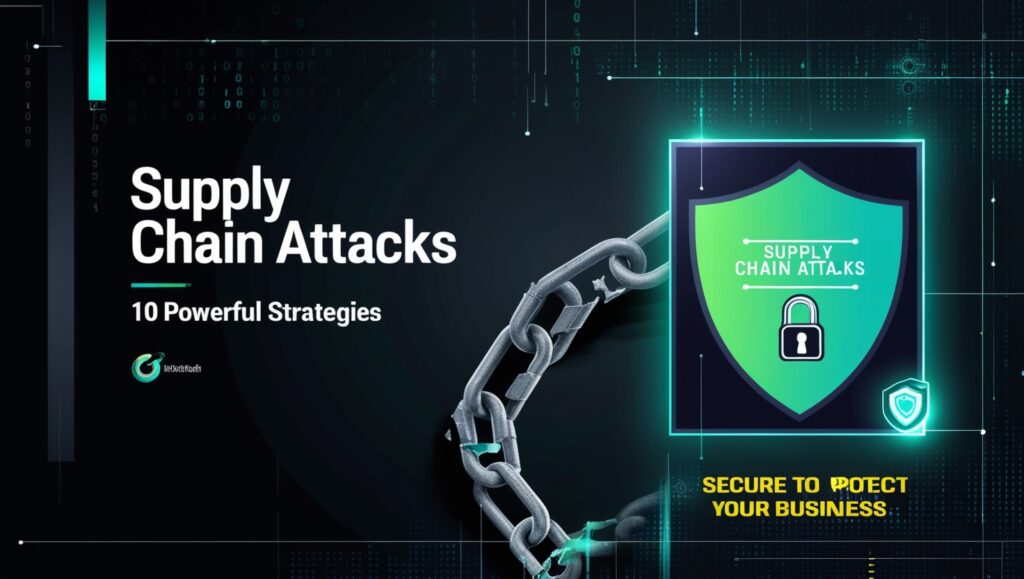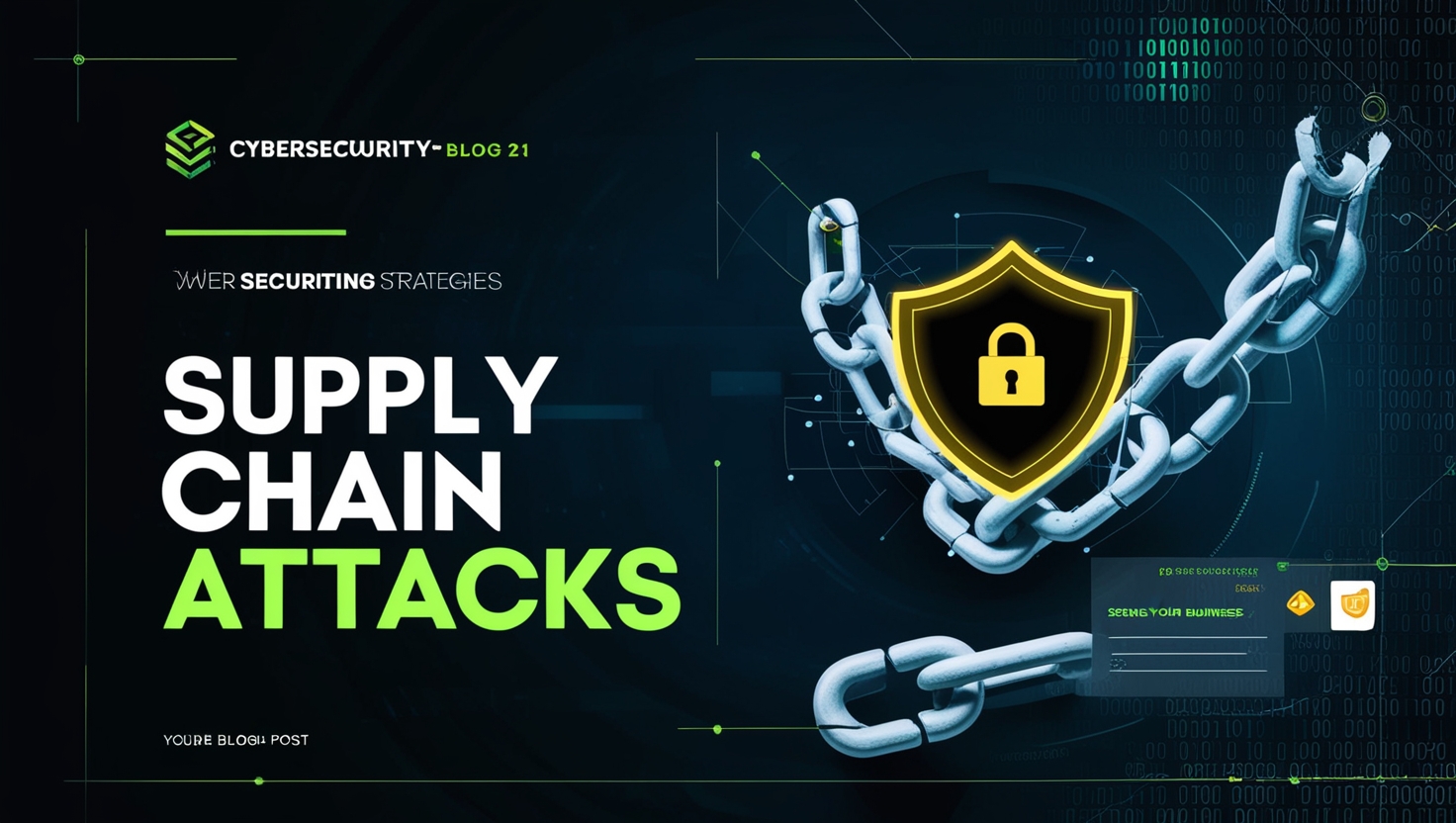Supply Chain Attacks have emerged as one of the most sophisticated and damaging cyber threats. These attacks exploit vulnerabilities in the supply chain to infiltrate organizations, often causing widespread disruption. In this blog, we’ll dive deep into what Supply Chain Attacks are, how they work, and how you can protect your organization from them.

1. Introduction to Supply Chain Attacks
Supply Chain Attacks occur when cybercriminals target a third-party vendor or service provider to gain unauthorized access to their customers’ systems. Instead of attacking an organization directly, hackers exploit weaker links in the supply chain, such as software providers, hardware manufacturers, or cloud services. This indirect approach makes Supply Chain Attacks highly effective and difficult to detect.
For example, in the infamous SolarWinds attack, hackers compromised the company’s software update mechanism, allowing them to infiltrate thousands of organizations, including government agencies. This highlights the growing importance of understanding and mitigating Supply Chain Attacks.
2. How Supply Chain Attacks Work
Supply Chain Attacks typically follow a multi-step process:
- Identify a Weak Link: Hackers target a third-party vendor with weaker security measures.
- Infiltrate the Vendor: They gain access to the vendor’s systems, often through phishing or malware.
- Compromise the Product: The attacker inserts malicious code into the vendor’s software or hardware.
- Distribute the Malware: The compromised product is distributed to the vendor’s customers.
- Exploit the Target: Once installed, the malware provides the attacker with access to the customer’s systems.
This method allows attackers to bypass traditional security measures, making Supply Chain Attacks particularly dangerous.
3. Why Supply Chains Are Vulnerable
Supply chains are inherently vulnerable due to several factors:
- Third-Party Dependencies: Organizations rely heavily on third-party vendors for software, hardware, and services.
- Lack of Visibility: Many organizations have limited visibility into their vendors’ security practices.
- Complexity: Modern supply chains are highly complex, with multiple layers of vendors and subcontractors.
- Inadequate Security Measures: Smaller vendors often lack the resources to implement robust cybersecurity measures.
These vulnerabilities make supply chains an attractive target for cybercriminals.
4. Types of Supply Chain Attacks
Supply Chain Attacks can take various forms, including:
- Software Supply Chain Attacks: Hackers compromise software updates or libraries (e.g., SolarWinds).
- Hardware Supply Chain Attacks: Malicious components are inserted into hardware during manufacturing.
- Third-Party Service Compromises: Attackers target service providers, such as cloud platforms or managed IT services.
Each type poses unique challenges and requires tailored mitigation strategies.
5. Major Supply Chain Attacks in History
Several high-profile Supply Chain Attacks have made headlines in recent years:
- SolarWinds (2020): Hackers compromised the company’s software updates, affecting over 18,000 organizations.
- Kaseya (2021): A ransomware attack exploited a vulnerability in Kaseya’s software, impacting thousands of businesses.
- NotPetya (2017): A malware attack spread through a compromised software update, causing billions in damages.
These incidents underscore the devastating impact of Supply Chain Attacks.
6. The Impact of Supply Chain Attacks
The consequences of Supply Chain Attacks can be severe:
- Financial Losses: Organizations face significant costs for remediation, legal fees, and regulatory fines.
- Reputational Damage: A breach can erode customer trust and damage brand reputation.
- Operational Disruptions: Attacks can disrupt business operations, leading to downtime and lost productivity.
- Data Breaches: Sensitive data may be stolen, exposing organizations to further risks.
7. How to Detect Supply Chain Attacks
Detecting Supply Chain Attacks requires a proactive approach:
- Monitor Network Traffic: Look for unusual activity or connections to unknown IP addresses.
- Implement Threat Intelligence: Use threat intelligence feeds to stay informed about emerging risks.
- Conduct Regular Audits: Assess your vendors’ security practices and ensure compliance with industry standards.
- Use Behavioral Analytics: Detect anomalies in user behavior that may indicate a compromise.
8. Preventing Supply Chain Attacks
Preventing Supply Chain Attacks involves a combination of strategies:
- Vendor Risk Management: Evaluate and monitor the security practices of third-party vendors.
- Secure Software Development: Ensure that software is developed and tested securely.
- Implement Multi-Factor Authentication (MFA): Add an extra layer of security to protect against unauthorized access.
- Regular Patching: Keep software and systems up to date to address known vulnerabilities.
9. The Role of Zero Trust in Supply Chain Security
The Zero Trust model is a powerful approach to securing supply chains. It operates on the principle of “never trust, always verify.” Key components include:
- Continuous Verification: Regularly verify the identity and access privileges of users and devices.
- Least Privilege Access: Limit access to only what is necessary for each user or device.
- Micro-Segmentation: Divide networks into smaller segments to contain potential breaches.
10. The Future of Supply Chain Security
As technology evolves, so do Supply Chain Attacks. Emerging trends include:
- AI and Automation: Using AI to detect and respond to threats in real-time.
- Blockchain Technology: Enhancing transparency and traceability in supply chains.
- Collaborative Efforts: Increased collaboration between organizations and governments to combat supply chain threats.
11. Regulatory and Compliance Considerations
Governments and regulatory bodies are taking steps to address Supply Chain Attacks:
- Cybersecurity Frameworks: Adopting frameworks like NIST and ISO 27001.
- Data Privacy Regulations: Complying with GDPR, CCPA, and other data protection laws.
- Industry Standards: Following standards such as SOC 2 and PCI DSS.
12. Conclusion: Staying Ahead of Supply Chain Threats
Supply Chain Attacks are a growing threat, but with the right strategies, organizations can protect themselves. By understanding how these attacks work, implementing robust security measures, and staying informed about emerging trends, you can stay ahead of cybercriminals.
13. FAQ Questions
Q1: What is a Supply Chain Attack?
A: A Supply Chain Attack occurs when hackers target a third-party vendor to infiltrate their customers’ systems.
Q2: How can I protect my organization from Supply Chain Attacks?
A: Implement vendor risk management, secure software development, and the Zero Trust model.
Q3: What are some examples of Supply Chain Attacks?
A: SolarWinds, Kaseya, and NotPetya are notable examples.

Leave a Reply